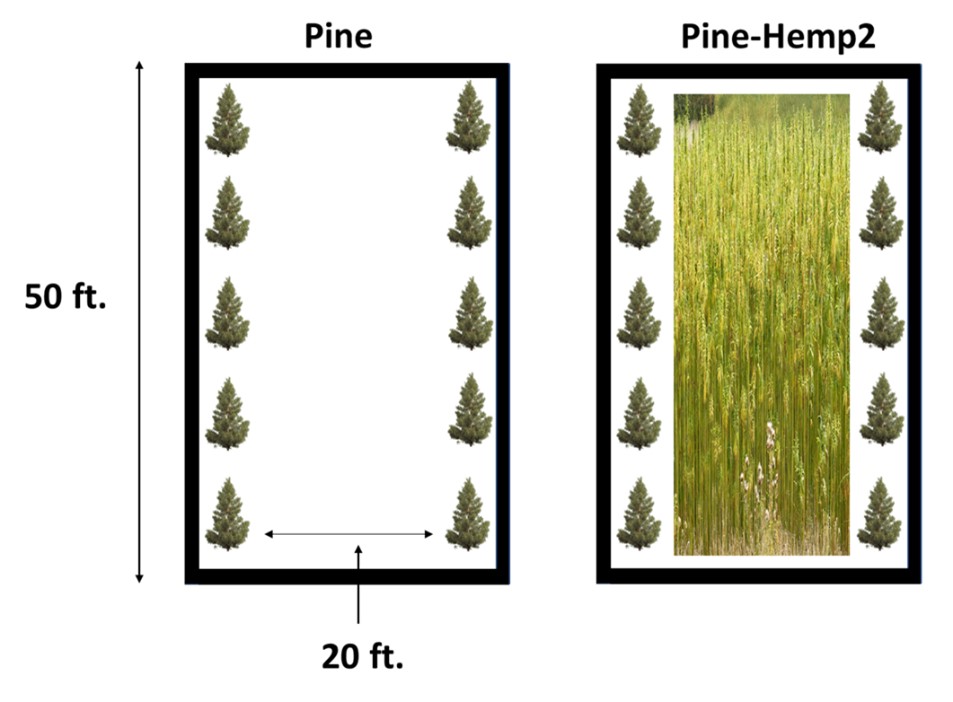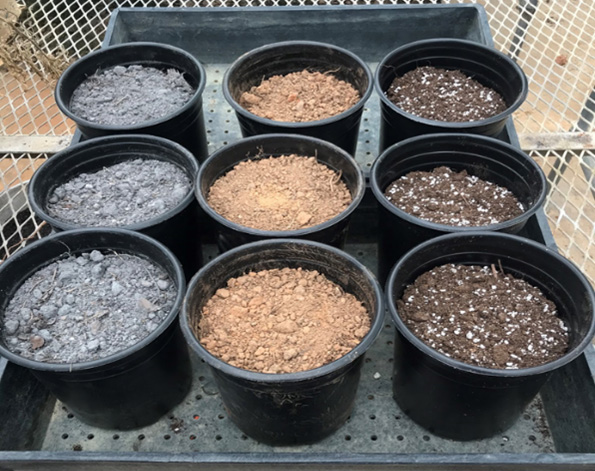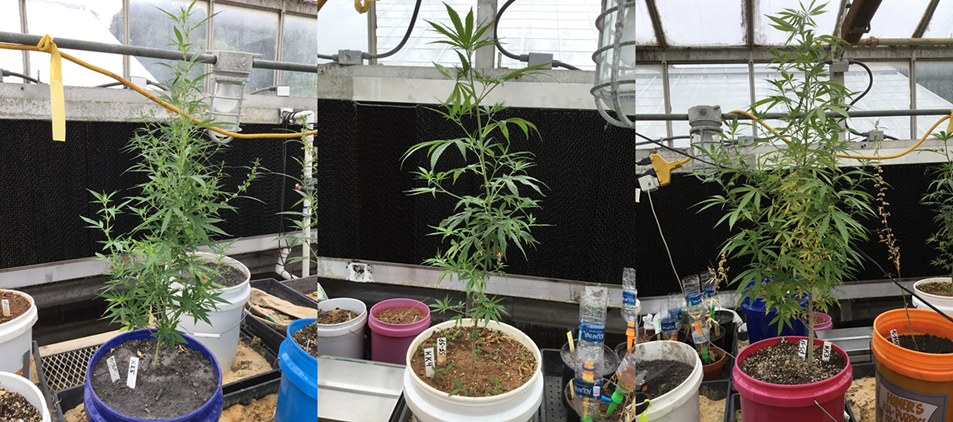Land covers about 29% of the Earth’s surface and is an essential natural resource for the survivability and prosperity of humanity. As the human population continues to expand, land and other natural resources will begin to experience depletion.
I currently work with industrial hemp, and its recent legalization opened opportunities for hemp-based research. Knowing how precious land is, how can we incorporate industrial hemp without occupying more land?
A possible solution to this question is intercropping. This method involves growing two or more crops simultaneously on the same land. I’m researching whether industrial hemp can be intercropped with loblolly pine trees.

Loblolly pine trees are of interest because they are the most abundant tree species in the southeastern US, which is where my university resides. Let’s look at how a loblolly pine plantation owner might consider the pros and cons of intercropping with hemp.
Most plantation owners are also business owners. In order to grow loblolly pines for lumber to be used in construction, they must be grown with enough room to grow into tall, straight trees. But there is 50ft x 20ft of unused land in the middle of each stand.
So, a good question to consider is why waste this space. With limited land surface on earth – and percentage that a plantation owner owns, wouldn’t they want to optimize how they use their land?
Intercropping the pine trees with industrial hemp adds another source of income. The crops don’t interfere with each other because they have different growing requirements. Now instead of having a plantation like the picture on the left of the above photo, your land now looks like the plantation on the right. This intercropping process has the intentions of promoting sustainability by utilizing all your land, and by doing so, rewarding you with profit from the products industrial hemp produces.
But, before we can recommend intercropping industrial hemp, we must make sure there wouldn’t be any harm done in the process.

My research involved a greenhouse study to test the feasibility of growing hemp in loblolly pine soil. I collected soil from two different pine plantations: Jacksonville, NC and Raleigh, NC. The soil from Jacksonville, NC is identified as a Norfolk loamy fine sand and the soil from Raleigh, NC is recognized as a Cecil sandy loam. For my control group’s soil, I used regular potting soil.
I also observed any differences how the hemp plants grew in each soil type. I looked at shoot diameter, biomass (shoots/roots), nutrient levels in the soil, and the nutrient levels in the plants’ shoots/roots.
My results indicate that industrial hemp can be grown as a crop, intercropped in loblolly pine stands. In my study, potting soil gave the best results for hemp growth, but that didn’t mean the hemp did poorly in the plantation soils. I grew a total of eighteen plants (6 per soil type) and only one succumbed to death, which occurred in the Cecil series. My statistical analysis revealed there was no difference between growing industrial hemp in either of the pine plantation soils.

Nutrient levels in the soil were dependent on pH, composition, and parent material. There were no outstanding concerns regarding this topic. The nutrient levels within the shoot/roots were within acceptable range for most crops, which eliminates the concern of nutrient toxicity or nutrient depletion.
Overall, my study serves as the foundation for the goal of intercropping industrial hemp. If we plan on promoting the process of intercropping, the next step will be to compose a field study, which is soon to come.
Answered by Tyrik Cooper, North Carolina State University
To receive notices about future blogs, be sure to subscribe to Soils Matter by clicking on the Follow button on the upper right! Explore more on our webpage About Soils. There you will find more information about Soil Basics, Community Gardens, Green Infrastructure, Green Roofs, Soil Contaminants, materials for Teachers and more.
